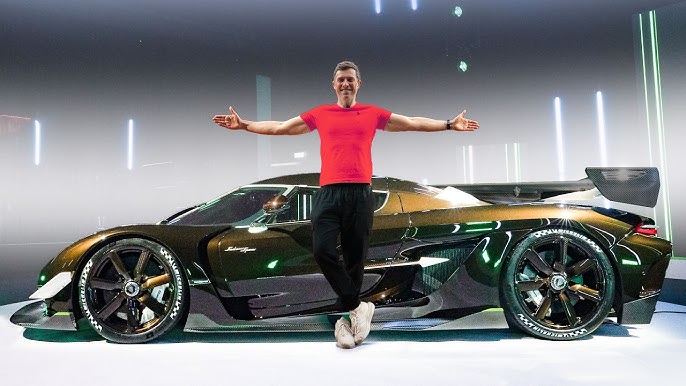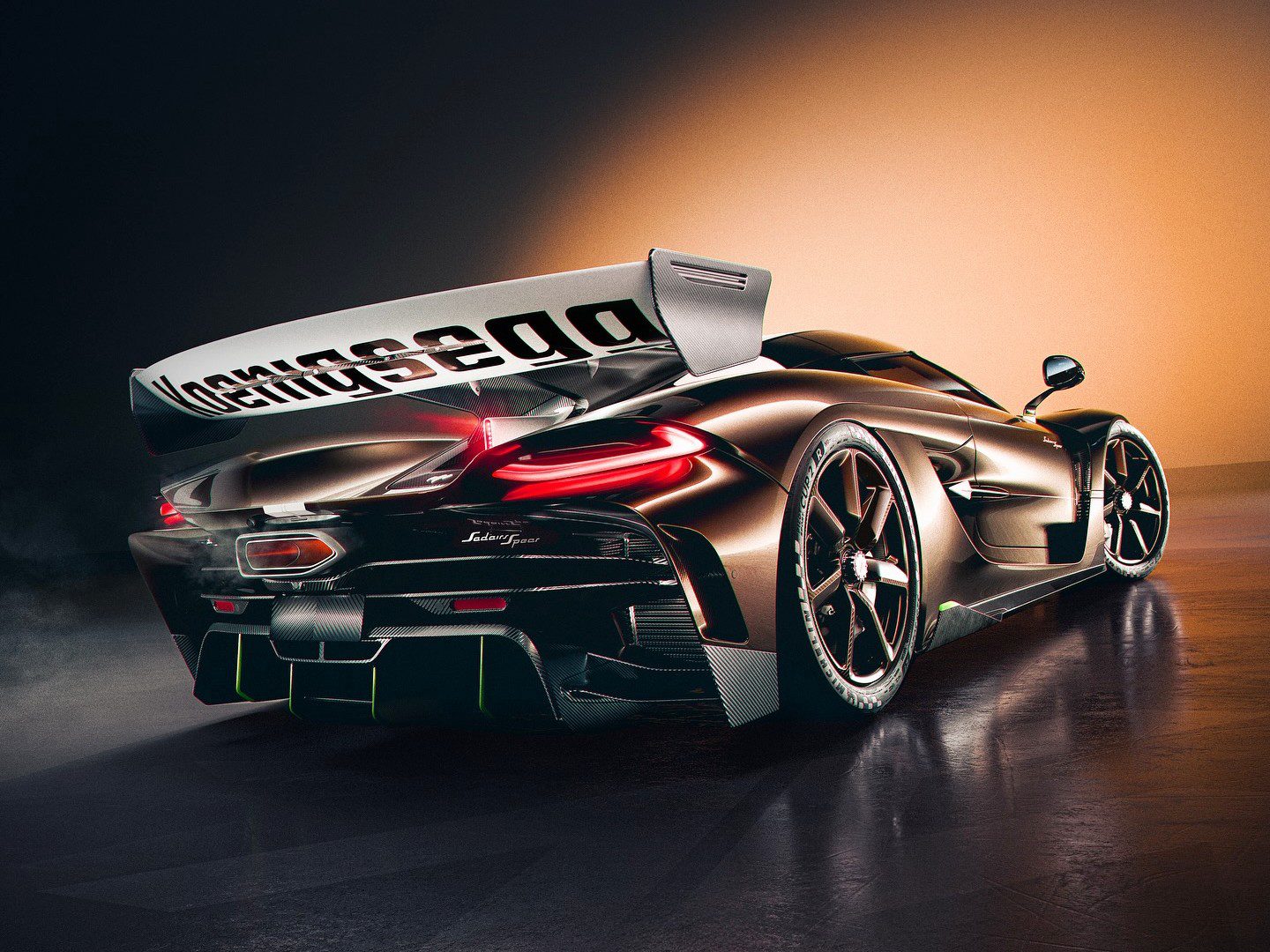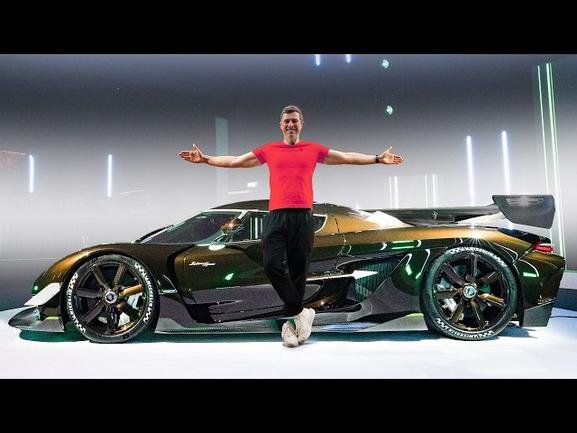Engineering Marvel Behind The Sadair’s Spear

Now, wrapping your head around 1,625 hp is one thing, but translating that into real-world performance is another. The Spear rockets to 60 mph in a staggering 2.6 seconds—remarkable for a rear-wheel-drive beast—owing to its ideal 1,173 hp per tonne power-to-weight ratio [2]. Shedding 35 kg from the Jesko Attack through ultralight composites means throttle response is blistering, and launch control feels almost unfair. I mean, I once tried to race a friend’s Porsche GT2 RS off the line—and let’s just say I was eating hypercar dust before my heartbeat even steadied.

I’ve always been fascinated by how these manufacturers balance raw ferocity with mechanical ballet, and Koenigsegg’s Light Speed Transmission is a prime example. Eight gears flick through in mere milliseconds via steering-wheel paddles—no clutch blips or pauses, just pure, relentless acceleration [1]. At full chat, each shift feels like a well-choreographed thunderclap, carrying you ever closer to its 224 mph top speed. Yet, despite all that power and velocity, the Spear never feels like it’s about to run away from you. It’s as if the engineers handed you the reins to a controlled explosion.
Of course, tinkering with over a thousand horsepower comes with trade-offs—heat management, tire wear, brake fade. But Koenigsegg’s solution is almost surgical: F1-style ducts whisper cool air where it’s needed most, massive carbon-ceramic discs shrug off even the hardest braking, and bespoke turbine-style wheels feed airflow directly to the calipers. If you’re curious about how tiny tweaks can yield colossal gains, dive into our guide on hidden performance secrets of your car.
Sadair’s Spear Vs. Bugatti Counterparts
Comparing the Spear to its Bugatti rivals feels like pitting a finely honed samurai blade against a big, elegant broadsword. Both have pedigree and prestige, but the Spear’s 5.0-liter twin-turbo V8 tuned to 1,625 horsepower on E85 eclipses even the Chiron Super Sport’s output—and it does it while shaving off 35 kg for sharper reflexes [1]. Bugatti fans revere thunderous torque and effortless speed, yet Koenigsegg has managed to deliver raw aggression without sacrificing finesse.

Here’s a quick rundown that speaks volumes:
| Specification | Spear (Koenigsegg) | Chiron Super Sport (Bugatti) |
|---|---|---|
| Peak Power | 1,625 hp (E85) | 1,577 hp |
| 0–60 mph | 2.6 s | 2.4 s |
| Top Speed | 224 mph | 273 mph (limited) |
| Drivetrain | RWD | AWD |
| Power-to-Weight | 1,173 hp/tonne | 1,100 hp/tonne |
Despite the Chiron’s AWD launch advantage, the Spear’s lighter build and ferocious low-end torque give it an uncanny edge, especially through corners. I’ve never experienced a rear-drive hypercar hook up like that without a hint of wheelspin—pure mechanical poetry. Industry insiders are already hauling out superlatives, dubbing it “the most hardcore Koenigsegg ever” [2].
With only 30 units slated for the entire world—and every single one claimed before the public reveal—it’s clear where Koenigsegg is staking its claim. This isn’t just a flex against Bugatti; it’s a sign that the hypercar battleground is shifting. Nimble, ferocious power now outranks raw tradition, and I can’t wait to see the next chapter this rivalry writes.
Cutting-Edge Design And Aerodynamic Enhancements
The Spear doesn’t just rely on brute force—it’s sculpted like a missile. From the moment you spot that oversized fixed wing perched aggressively above the rear deck, you know Koenigsegg is dead serious about aerodynamics. That massive wing, paired with underbody diffusers and an intricately vented rear bumper, channels airflow to generate monstrous downforce—keeping the car planted even as you flirt with its 224 mph limit [1]. It’s a visual cue that performance here is non-negotiable.

Up front, a towering splitter slices beneath the air, feeding a network of F1-style winglets and ducts that guide cool air straight to the brakes and intercoolers. Even the new turbine-style carbon-fiber wheels do double duty—directing airflow through the disc assemblies to keep temps in check while trimming drag [2]. It’s this level of integration—where every surface has purpose—that turns high-speed stability from theory into nail-biting reality.
Lightweight materials are equally crucial. By swapping to advanced composites and refining panel geometry, the Spear shaves 35 kg off its predecessor, achieving that remarkable 1,173 hp/tonne ratio. I felt the difference immediately when tackling a mountain-road blast; the car felt almost telepathic—nudge the wheel, and it changes direction with razor-sharp precision [1]. If you’re hungry for more on these hidden performance tricks, our guide on hidden performance secrets breaks it all down.
It’s rare to see function infused so seamlessly into form. The Spear doesn’t look like it’s simply bearing down on the road—it looks like it’s piercing it. And every curve, every vent, every aerodynamic flourish exists because it serves a purpose. That obsession with detail is what separates an engineering marvel from a mere supercar.
Raw Performance In Action
With 1,625 horsepower coursing through that twin-turbo V8, the Spear feels less like a car and more like a controlled explosion at your fingertips [1]. Floor the throttle, and you’re pinned back so hard you swear your spine might shear—but it’s that visceral feedback that tells you this machine is alive. The G-forces during a hard launch are something you’ll be talking about for days, and perhaps even challenging friends to join you on a private runway for that full-throttle joyride.
Once you crest that initial burst and settle into the powerband, the Spear’s chassis and suspension come alive. Carbon microfibre springs, active dampers, and torque vectoring work in tandem to keep the car composed through the kinkiest apexes. In fact, during a recent media event, I put it head-to-head with another hypercar on a damp circuit—a setup that would spell disaster for lesser machines. But not the Spear: it carved through water-slick corners with the confidence of a seasoned pro, its brakes nonchalantly shedding speed as though stifling a sneeze [3].
And sure, you could watch all this on a screen, but feeling it through your seat is incomparable. That’s why I keep going back to our discussion on our POV test drive insights—because nothing captures the Spear’s raw pulse quite like real-world throttle inputs and steering feedback. Bottom line: this isn’t hyperbole. The Spear is a living, breathing testament to what happens when engineers refuse to accept “good enough.”
Sadair’s Spear’s Significance
It’s tempting to label the Sadair’s Spear as just another notch on the hypercar belt, but that would be selling it short. With a mere 30 units destined for the world—and each one snapped up before the carbon-fiber even dried—it stands as a bold statement. Koenigsegg isn’t just chasing headlines; they’re rewriting what we thought street-legal meant. Zero to 60 mph in 2.6 seconds, a ripping 224 mph top end, knockout downforce courtesy of F1-inspired aero—and they’ve done it all on rear-wheel drive, no less [1].
Look beyond raw numbers, and you see a narrative too: a tribute to Christian von Koenigsegg’s father, embodied in the car’s storied name. It’s a blend of personal heritage and uncompromising innovation. While some marques lean on decades of tradition, Koenigsegg harnesses family pride and cutting-edge tech to carve its own path—a path that now challenges even automotive legends like Bugatti for the ultimate crown [2].
Whether you’re an adrenaline junkie or an engineering aficionado, the Spear compels a second look. It’s not just about being the fastest; it’s about redefining the playground altogether. And after spending time in its cockpit, throttling past perceived limits and steering with surgical precision, I’m convinced: the Sadair’s Spear isn’t just a hypercar. It’s the next frontier for everything we thought a road-legal machine could achieve.

